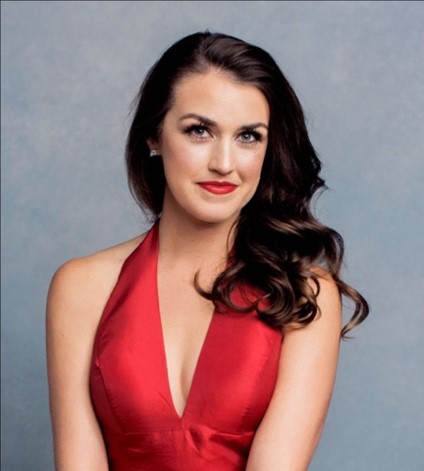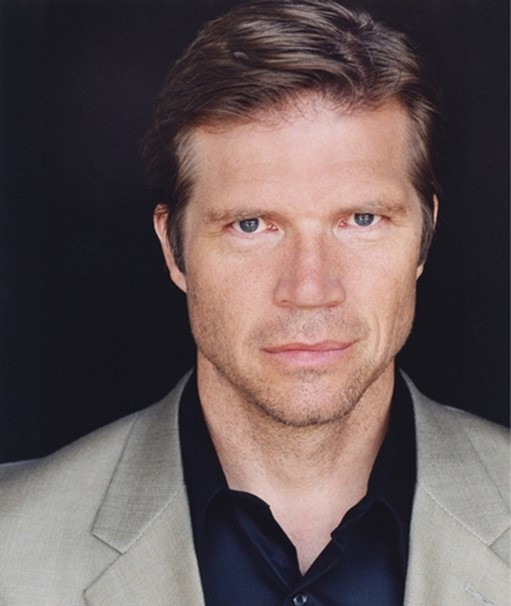At the Schermerhorn
Hallelujah!: NSO’s Production of Handel’s Messiah

I was fortunate to experience George Frideric Handel’s Messiah performed by the Nashville Symphony Orchestra and Chorus. I saw the last performance on Sunday, December 17, 2023, at 2:00 p.m. Being relatively new to Nashville, this was my first trip inside the Laura Turner Concert Hall at the Schermerhorn Symphony Center downtown. I enjoyed seeing Turner Hall’s European-inspired, neo-classical architectural style, especially since the beautiful hall was festooned with traditional holiday décor. Nashville Symphony Chorus director Dr. Tucker Biddlecombe led the combined orchestra and chorus beautifully through Messiah, and this production featured vocal soloists Raven McMillon—soprano; Katherine Beck—mezzo-soprano; Tyler Nelson—tenor, and Rod Gilfry—baritone.
Messiah is one of Handel’s most popular and beloved works. Composed in 1741, Handel’s music—even nearly 300 years later—still has its place in the public’s consciousness in many parts worldwide, especially during the Christian holiday seasons, Christmas and Easter. The Messiah consists of roughly fifty musical numbers (depending on how the work is produced—sometimes smaller numbers are, or are not, combined) divided into three main parts that depict the life of Jesus Christ. The wordbook—or the libretto—for London’s 1743 premier of Messiah reads:
And without controversy, great is the mystery of Godliness: God was manifested in the Flesh, justify’d by the Spirit, seen of Angels, preached among the Gentiles, believed on in the World, received up in Glory. In whom are hid all the Treasures of Wisdom and Knowledge.[1]
Just as this forward above in part describes the Messiah, Part I of the work marks the coming and birth of Christ;

Part II reflects upon Christ’s passion, persecution and death, resurrection, and the spreading of the Christian Gospel; and last, Part III asserts Christ’s second coming, the end of the world, and God’s promise of eternal life. Also, Messiah is one of Handel’s remarkable oratorios; an oratorio, a genre of music containing the primary musical components of opera, is without some of the more costly performative aspects, like staging, sets, or costumes. One might consider Handel’s oratorios like that of concertized operas. Unlike other Handel oratorios—such as Esther, Saul, and Belshazzar—the Messiah’s narrative is less story-like, but instead, it operates like a collection of vignettes that together contemplate Christ rather than construct a literal and definitive account.

Oratorios, including Messiah, use the similar musical structure of Eighteenth-century Italian opera—for which Handel wrote over 40 Italian operas—such as choruses (many people singing), arias (solo songs), and recitatives (linking passages between arias and choruses). An excellent example of how these three components work together is in Part II—Christ’s Passion, during a sequence depicting Christ’s persecution as he was being hung on a cross. A large chorus sings, “He trusted in God,” which depicts a population doubting Christ as the son of God, saying, “He trusted in God that He would deliver him if He delight in Him.” The highly imitative texture of this chorus gives a sonic impression of people forming a growing mob mocking Christ with increasing intensity. A recitative immediately follows the chorus—“Thy rebuke hath broken His heart.” A solo tenor voice, representing an individual’s point of view from within the mob at that moment, reflects on his own sadness and dismay regarding his betrayal of Christ. The tenor sings: “Thy rebuke hath broken His heart; He is full of heaviness. He looked for some to have pity on him, but there was no man, neither found He any to comfort Him.” This recitative leads right into a short and solemn aria—still sung by the tenor—“Behold, and see if there be any sorrow like unto His sorrow.”

One of the reasons I chose to describe the sequence discussed above is because of Nelson’s brilliant performance as tenor soloist for this particular recitative and aria. Nelson, obviously a true professional, delivered such a compelling performance throughout the Messiah, but the emotion from the audience that his singing evoked in “Rebuke” and “Behold” was a stand-out moment for me. Blown away! describes my reaction to the firm, rich, and beautifully colorful timbre of mezzo-soprano Katherine Beck’s voice—the Boston Globe hailed Beck’s voice as “balmy.” Whether it was emoting Messiah’s long, expressive phrases or executing its fast and intricate melisma—or rapidly singing chains of notes while sustaining a single vowel—Beck maintained technical control over her voice, never letting the world-class quality of her tone diminish. Soprano soloist Raven McMillon’s performance was celestial. I perked up at her “Rejoice greatly, O daughter of Zion” performance, McMillion executing the coloratura soprano aria with the most remarkable ease, ultimately owning a nearly ten-second melismatic passage. Additionally, baritone soloist Rod Gilfry grabbed the audience’s attention with his loud, thunderous voice. Authoritative and commanding, Gilfry, even in his lower register, still sang such technical passages with a high level of clarity.

I would be remiss if I failed to mention the “Hallelujah” Chorus at the conclusion of Part II. Biddlecombe offered us a refreshing interpretation of the chorus’ entrance. The initial entrance of the lyric “Hallelujah” is often heard with a firm attack, as if to convey the intense joy and excitement associated with Christ’s resurrection. This aspect of the “Hallelujah” Chorus has become a cinematic trope, especially in comedies, marking moments of gratuitous celebration—think Clark Griswold’s house-lighting scene in National Lampoons Christmas Vacation (1989). Instead, Biddlecombe chose to round the edges of the articulation, allowing the chorus’ entrance to drift in, creating a gorgeous swell. All voices within the homophonic texture were clearly discernable, and the impeccable intonation enabled the composite sound to effectively ring throughout the hall. As tradition requires, the audience stood during the chorus. Nobody knows for sure why audiences display such magistral behavior, like standing during the “Hallelujah” Chorus; no one is sure about how the tradition started.
A popular theory describes how King George II stood during the “Hallelujah” Chorus at the Messiah’s 1743 London premiere. However, despite a widespread acceptance of that account, it has never been 100% confirmed. During the NSO’s performance, spectators began moving their bodies in ways they felt were appropriate in the moment—some swayed, others waved their arms as if to conduct. Also, I could hear several audience members around me singing passages under their breath. Many people seem to feel strongly connected to the “Hallelujah” chorus, and witnessing it in Turner Hall was remarkable.
NSO’s production of Handel’s Messiah was top notch, and I look forward to attending more NSO concerts in the future. Nashville is fortunate to have such a high quality and active symphony orchestra of its own. Find out more about the NSO and their concert and event schedule on the website at https://www.nashvillesymphony.org.
[1] “Wordbook for the first London performance of ‘Messiah’, Theatre Royal, Covent Garden, March 1743,” Oxford Music Online, Accessed: December 19, 2023.



